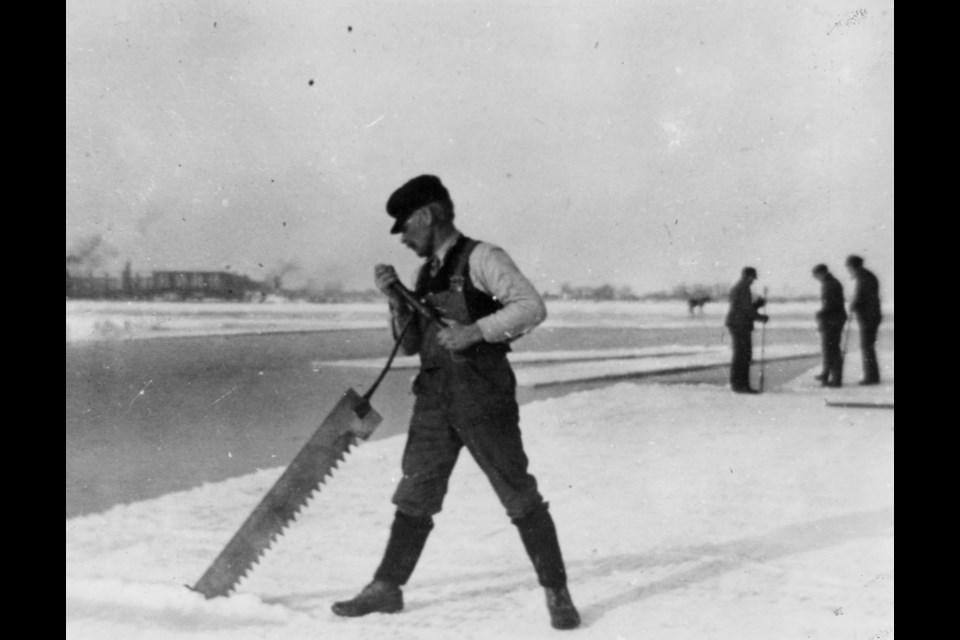In a previous column, we discussed the Lake Simcoe Ice Company. Since then, I’ve received a few emails about how the ice was harvested from the lake, so I thought I’d elaborate.
In the late 19th and first half of the 20th centuries, the primary form of refrigeration for personal use, butcheries, restaurants and resorts came from ice painstakingly cut from the lakes. Hundreds of men across the Lake Simcoe region would have found seasonal employment in the industry.
Whether one worked for a large ice company or cut ice on a much more modest scale, the basics remained the same.
Harvesting began in earnest once the ice had reached 10 to 20 inches in thickness, which, in a typical year, occurred in January or February. It was then a mad dash to bring in the yearly quota before the ice began to melt in March.
Snow was removed from the surface of the lake with a horse-drawn plow, and then outlines of blocks were marked with charcoal. Oftentimes, a horse team would run a plow over the lines, etching deep grooves that would ease the process of cutting ice blocks.
Using an ice saw (much later, a mechanized circular saw), the ice was cut into large blocks, typically of about 400 pounds.
In many cases, ice blocks were brought to the shore through channels of open water cut into the ice, guided by men with pike poles. The ice was pulled onto shore, typically with a jack-ladder system like those used in sawmills.
In other cases, ice blocks were loaded onto a horse-drawn sled to be brought to shore.
In either event, the ice was then stored in an ice house. Ice houses were typically built of sturdy logs with interior walls lined with hay for insulation. Ice was buried under sawdust up to a foot thick to further insulate it from melting.
The ice was later cut down further into 25- to 50-pound blocks to sell.
Harvesting ice was hard work, but men across the region lamented the lost jobs once refrigeration and artificial ice spelled the end of the industry across North America by the middle of the 20th century.



